Symbols of Peace
Monuments show wish to protect life
Seventy years have passed since World War II broke out. Over these 70 years, the world has faced a large number of wars and conflicts and produced scores of child victims.
As a result, a variety of monuments have been established in memory of the souls of these lost children and in the wish for peace in the world. For this issue, we introduce several such monuments dedicated to children. In addition, we consider creative ways to link these monuments in order to join forces in an appeal for peace.
For example, we propose producing such things as a song, a mosaic, a picture book, and a monument to drive "evils" away. Another idea is inflating a large balloon with air from the many sites where the children's monuments stand. We even dream of expanding this idea by bringing our balloon to London for the 2012 Olympic Games, the world's festival of peace.

Create a mosaic together People from countries with peace monuments gather to create a mosaic. We assemble the mosaic using photos of the monuments and the children living near the monuments as well as drawings that children have made. We suggest that the form of the mosaic be a heart, a dove, or a crane. The gathering site could change every year to create a new mosaic. The completed mosaics would then be displayed, in turn, in other countries. It could be a good opportunity to appeal for peace without having to visit those countries. (Mako Sakamoto, 13) 
Inflate a balloon with air from the monuments How about inflating a large balloon with air surrounding each monument and fly the balloon around the world? As the balloon is blown up, pieces of paper with words of peace written on them in each language can be inserted inside. And on the surface of the balloon, we write things that we don't want, like "poverty" and "war." After the balloon travels around the world, we puncture it at the opening ceremony of the London Olympics in 2012. When the balloon is broken, the things we don't want would disappear and the pieces of paper with words of peace would flutter out. This could be a way to show peace in a visible form. (Yuumi Kimura, 14) 
Create a picture book together We suggest that children in areas with peace monuments produce a picture book together. The story could be about hope for the future, peace, or something else of importance to us. Each area would be responsible for a page and all the pages would be connected to produce a story. The pictures would be drawn by children, too. Children, who have a different viewpoint compared to adults, can create a new type of picture book. We want adults to read it and have it inspire them to prevent such cruelties as war and abuse from occurring. (Saaya Teranishi, 13) 
Drive away "evils" by destroying a monument People living in countries with peace monuments work together to create a monument which embodies human "evils," like animosity and dishonesty. Then we destroy the monument with all our strength as we shout, "No more evil!" By purging these "evils" from ourselves, we can move closer to peace. At the same time, working together on such a project would be a good opportunity to deepen our understanding of one another. (Yuji Iguchi, 13) 
Create a song for peace We propose that children living mainly in areas with peace monuments create a song for peace. A song like this would be helpful for children to understand each other and raise their awareness of peace. Representatives of each country would be responsible for creating the music and lyrics for one verse, then the verses would be assembled into the song. The participants could then gather to decide the title. Each verse of the song would be written in a different language so the children sing the part they contributed. (Shiori Kusuo, 17) |
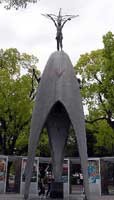
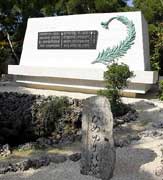
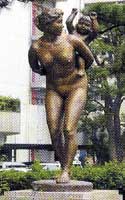
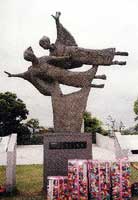
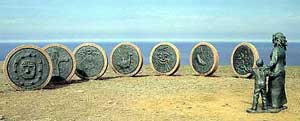

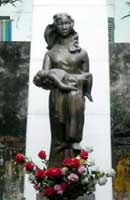
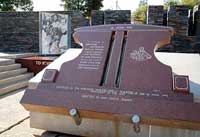
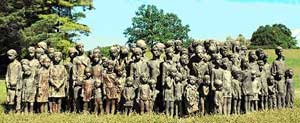
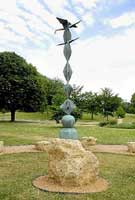
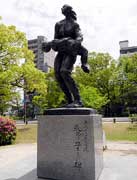
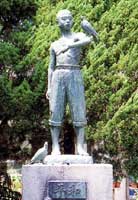
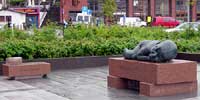
 縲縲
縲縲